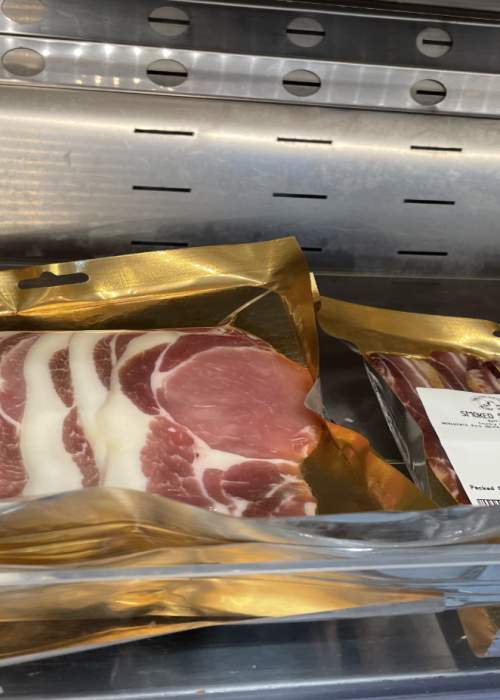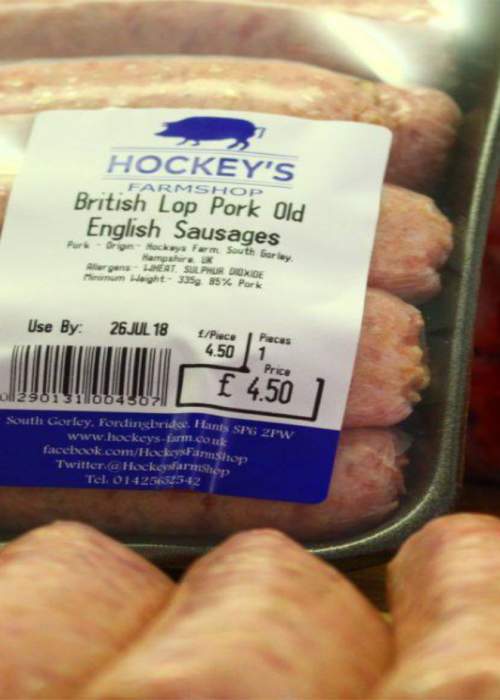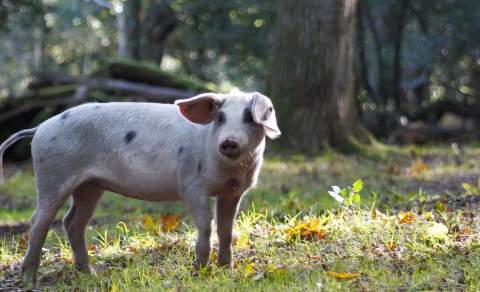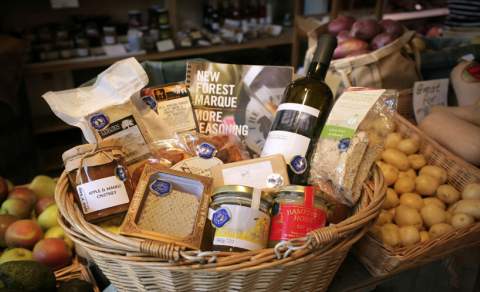Pannage Pork
From around the third week in September, for a minimum of 60 days, domestic pigs are released onto the forest to eat up all of the fallen acorns, beechmast, chestnuts and other nuts, that are poisonous to the free roaming ponies and cattle in the New Forest. They like to treat themselves to fallen apples sometimes too!
This traditional New Forest practice is called Pannage, also known as ‘Common of Mast’. It dates back to the time of William the Conqueror, who founded the New Forest in 1079. The New Forest is now one of the only locations that still practices pannage, where you can see pigs roaming around in the open forest.
There isn’t a specific breed of New Forest pig. The Tamworth, Gloucestershire Old Spot, the Wessex Saddleback and the British Saddleback are all breeds of pig that you may find in the forest each year. Every pig released must be fitted with a ring through its nose, which enables it to forage through leaves and surface vegetation and not root into the grounds with their snouts, causing damage to the forest floors.
Although some do not, it is traditional for the commoners whose pigs are released to butcher and salt the pigs that have been fattened up in pannage, ready for cooking and eating in the winter. You can buy pannage pork at some farm shops and butchers across the New Forest, including Hockey’s Farm Shop in Gorley. Pannage Pork is known to be incredibly delicious, and nutritious!
Some restaurants and pubs use pannage pork in the winter months in dishes on their menu - making for great places to try pannage pork!





